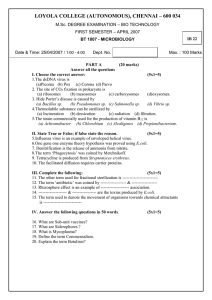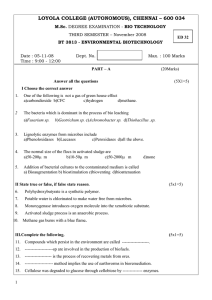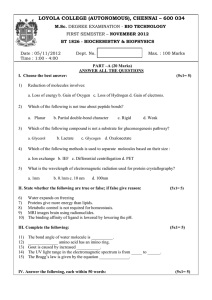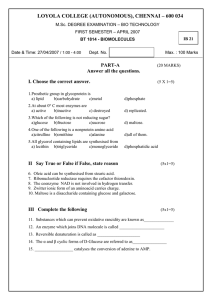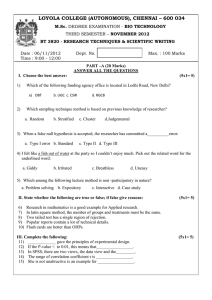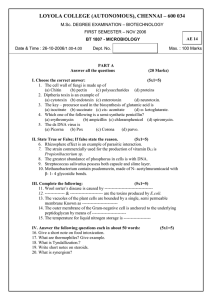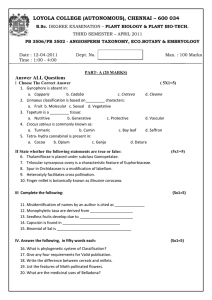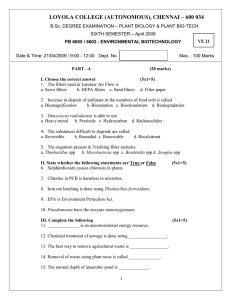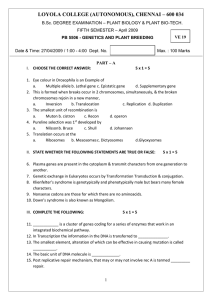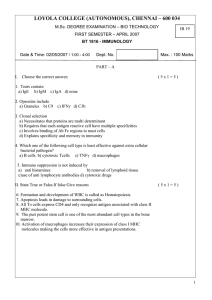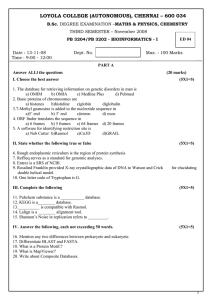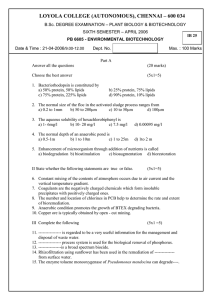LOYOLA COLLEGE (AUTONOMOUS), CHENNAI – 600 034
advertisement
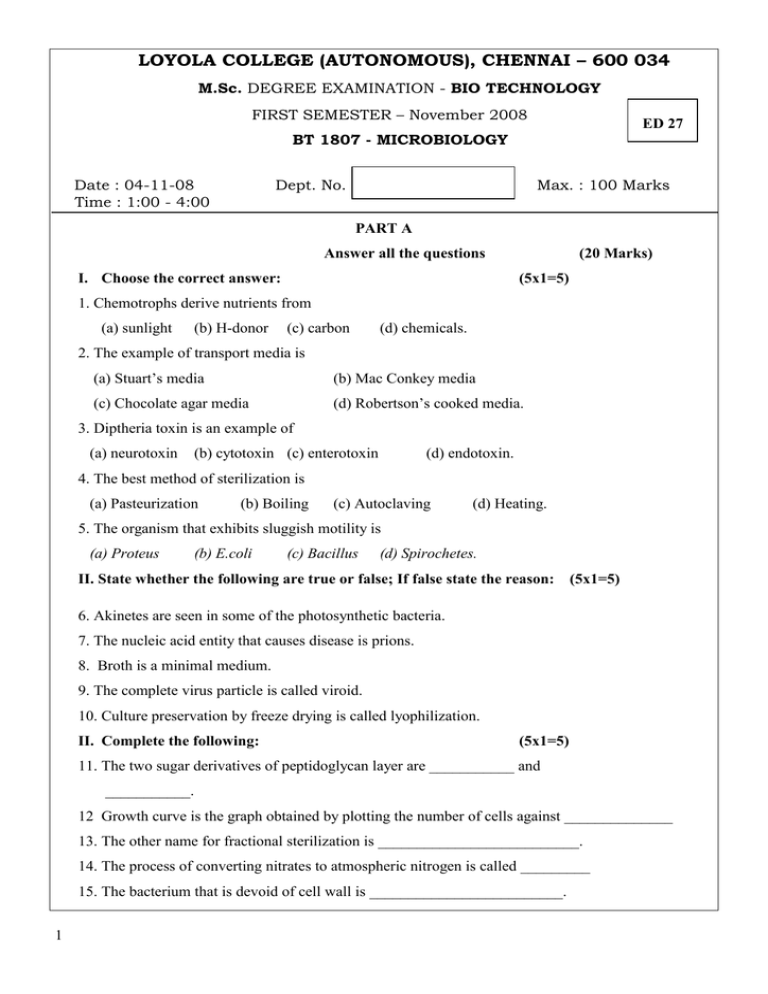
LOYOLA COLLEGE (AUTONOMOUS), CHENNAI – 600 034 M.Sc. DEGREE EXAMINATION - BIO TECHNOLOGY FIRST SEMESTER – November 2008 ED 27 BT 1807 - MICROBIOLOGY Date : 04-11-08 Time : 1:00 - 4:00 Dept. No. Max. : 100 Marks PART A Answer all the questions I. Choose the correct answer: (20 Marks) (5x1=5) 1. Chemotrophs derive nutrients from (a) sunlight (b) H-donor (c) carbon (d) chemicals. 2. The example of transport media is (a) Stuart’s media (b) Mac Conkey media (c) Chocolate agar media (d) Robertson’s cooked media. 3. Diptheria toxin is an example of (a) neurotoxin (b) cytotoxin (c) enterotoxin (d) endotoxin. 4. The best method of sterilization is (a) Pasteurization (b) Boiling (c) Autoclaving (d) Heating. 5. The organism that exhibits sluggish motility is (a) Proteus (b) E.coli (c) Bacillus (d) Spirochetes. II. State whether the following are true or false; If false state the reason: (5x1=5) 6. Akinetes are seen in some of the photosynthetic bacteria. 7. The nucleic acid entity that causes disease is prions. 8. Broth is a minimal medium. 9. The complete virus particle is called viroid. 10. Culture preservation by freeze drying is called lyophilization. II. Complete the following: (5x1=5) 11. The two sugar derivatives of peptidoglycan layer are ___________ and ___________. 12 Growth curve is the graph obtained by plotting the number of cells against ______________ 13. The other name for fractional sterilization is __________________________. 14. The process of converting nitrates to atmospheric nitrogen is called _________ 15. The bacterium that is devoid of cell wall is _________________________. 1 III. Answer the following questions each in about 50 words: (5x1=5) 16. What is capsule? 17. Define doubling time. 18. What are thermophiles? Give examples. 19. What are the two methods of asexual reproduction in yeast? 20. Explain mutualism. PART B IV. Answer any five of the following questions each in about 350 words. (5x8=40) 21. How do you enumerate the bacterial growth by pour-plate technique? 22. Explain the different sterilization techniques of physical methods in microbial culture. 23. What are antibiotics? Comment upon their source and mode of action with suitable examples. 24. Illustrate the biogeochemical cycling of carbon. 25. Give a comprehensive account on virus structure and replication. 26. Discuss the role of microbes as SCP. 27. Write about the industrial production and applications of vinegar. 28. Brief out the various methods of culture preservation. PART C V. Answer the following questions each in about 1500 words. (2x20=40) 29. (a) Describe the ultra structure prokaryotic cell with a labeled diagram. . (or) (b) Describe the role of microbes in nitrogen fixation. 30. (a) Discuss the ways in which microorganisms are classified based on their nutritional requirements. (or) (b) Illustrate penicillin biosynthesis in detail. ************** 2
